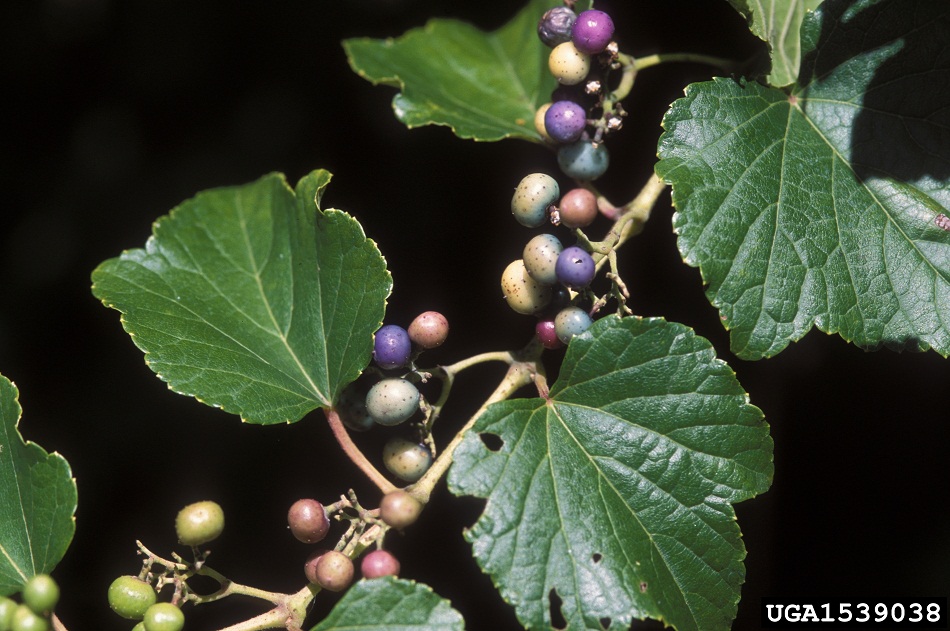 A woody, perennial vine related to grape is June’s Weed of the Month. Porcelain berry (Amelopsis brevipedunculata) came to the United States as an ornamental plant from Asia and escaped cultivation. In Minnesota, it is a Restricted Noxious Weed and has been found naturalizing in Rice and Ramsey Counties.
A woody, perennial vine related to grape is June’s Weed of the Month. Porcelain berry (Amelopsis brevipedunculata) came to the United States as an ornamental plant from Asia and escaped cultivation. In Minnesota, it is a Restricted Noxious Weed and has been found naturalizing in Rice and Ramsey Counties.Though similar to the native grapevine and climbs via tendrils, porcelain berry has characteristics to distinguish it from grapevine. The fruit is a speckled berry that varies in color ranging from blue, pink, purple, and cream. The berries are borne on long panicles. The bark has small spots and does not peel or shred like the native grapevine. The flowers are tiny, greenish-white, and are clustered in an umbrella shape. The undersides of the leaves and new wood have small hairs.
Porcelain berry is adapted to a wide variety of soils. It grows well on forest edges, thickets, river banks, and woodland openings. It is not tolerant of heavily shaded areas such as mature forest interiors and prefers full to partial sun. It spreads by seed that is moved by birds and other animals, and can also spread vegetatively by resprouting from roots. Porcelain berry overtakes other vegetation and can shade out native shrubs and trees by forming a thick monoculture.
Once established, porcelain berry vines are difficult to control. Infestation sites will need to be monitored and treated repeatedly until the seedbanks are depleted.
- Do not plant porcelain berry. Young plants can be pulled and the entire roots should be removed. Do not spread soil that contains any root sections.
- Foliar or cut-stem herbicide applications may be an option. For specific herbicide recommendations, contact your local University of Minnesota Extension educator.

